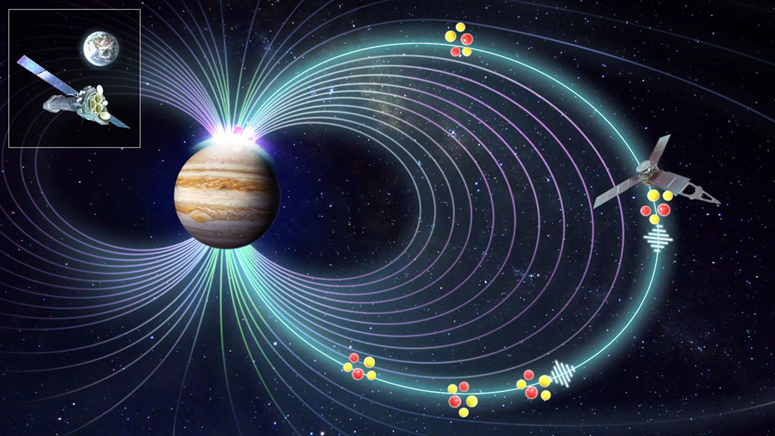The cause behind Jupiter's mysterious auroras in all seasons

Scientists believe that auroras could be the cause of a mysterious heating on Jupiter. (Image credit: J. O'Donoghue (JAXA)/Hubble/NASA/ESA/A. Simon/J. Schmidt)
Jupiter's mysterious "energy crisis" that has intrigued astronomers for 50 years could be caused by the northern lights, new observations suggest.
The largest planet in our solar system has long been known to be remarkably hot, despite its great distance from the sun. Jupiter is more than 5 astronomical units, or Sun-Earth distances (1 AU is 150 million kilometers).

Photo credit: NASA, ESA, and J. Nichols/University of Leicester
There is so little sunlight so far from the sun that Jupiter's upper atmosphere should be freezing. Scientists estimate it should be around -100 degrees Fahrenheit (-73 degrees Celsius), according to a NASA statement. However, the average temperature in Jupiter's upper atmosphere is 800 degrees F (426 C), almost as hot as the surface of the hellish planet Venus.
But where do Jupiter’s northern lights come from and why are there so many of them? We'll explain!
For years, scientists have tracked the cause of these mysterious northern lights that illuminate the fifth planet in the Solar System. Today, we perhaps know who is the cause, it could be its Moon Io.
If this moon manages to cause so much activity on the poles of Jupiter, it is thanks to its astronomical quantity of volcanoes. Io would be home to 400! Io's volcanoes eject a large amount of gas and electrons, which are then sucked up by Jupiter's magnetic field.

When electrons enter the atmosphere of Jupiter's poles, densely charged with magnetic activity, it creates the Northern Lights! Unlike terrestrial auroras, Jovian auroras are present in all seasons and are distorted. A mind-blowing show.
We are likely to see more and more of these beautiful images, because the next mission to explore the Galilean moons of Jupiter is just around the corner. On April 13, 2023, the JUICE mission set off to explore the Jupiter system and the probe repeatedly flew over three of Jupiter's four Galilean satellites — Callisto, Europa and Ganymede. Stay connected!
Source: websites

